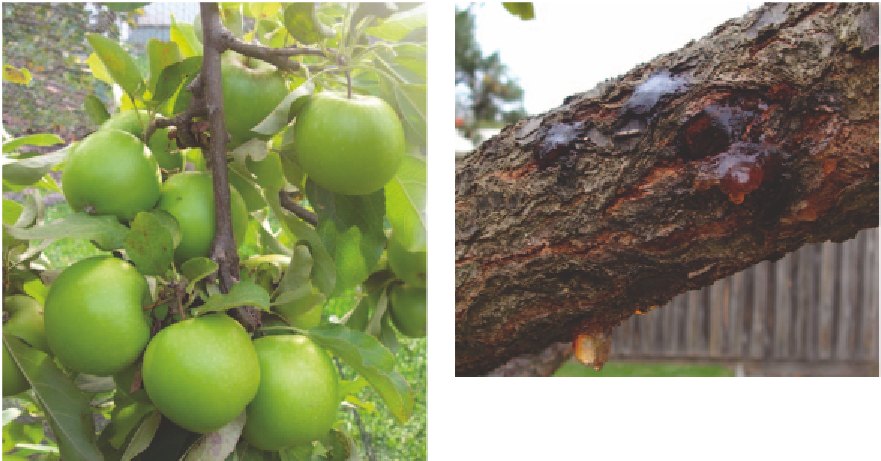Agriculture Reference
In-Depth Information
2
1
Figure 6.8
Gummosis is a debilitating disease that enters
apricots through pruning cuts. Keep pruning wounds as
small as possible and prune in dry weather when the tree
is actively growing to avoid infection.
Figure 6.7
A plentiful harvest. Note that the Granny
Smith fruits from both spurs (1) and short side growths (2).
The best form of pruning is light rather than
drastic, keeping pruning cuts small rather
than hacking off entire branches. Therefore,
the best fruit tree shape for apricots is a
relaxed open vase system or large pyramid/
spindle (see page 126, 'Free standing
fruit trees').
Harvest
When an apple can be removed with a gentle
twist they are ready to harvest. Some cultivars
ripen over a few weeks such as Gravenstein so
picking every few days will yield the best
results. Pick them gently so as not to damage
the spur wood.
In areas where gummosis is not a problem,
fan-trained espaliers can be very effective. In
such fortunate areas apricots can be pruned
hard with impunity as they hold many
dormant buds that develop even from very old
wood. Their two-dimensional shape makes
them easily protected from frost which will
devastate the blossom.
Apricots
Prunusarmenica
Apricots are possibly the most delectable of
stone fruits picked straight from the tree.
At the time of writing there are no dwarfing
rootstocks available so the apricot is a
substantial tree, and very beautiful too.
They are also prone to a disease called
bacterial gummosis, an infection that enters
the tree through pruning cuts, so in areas
where this is prevalent, great care must be
taken (see Figure 6.8).
Fruitingwood
Apricots fruit on small side growths and spurs
developed on one to three-year-old wood (see
Figure 6.9).

